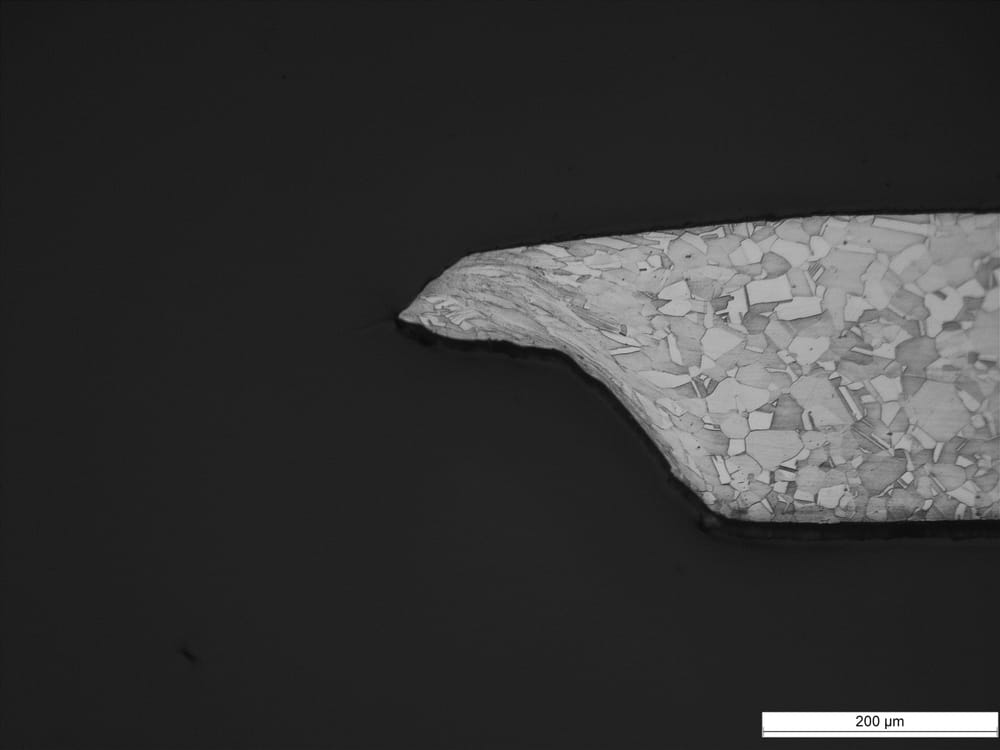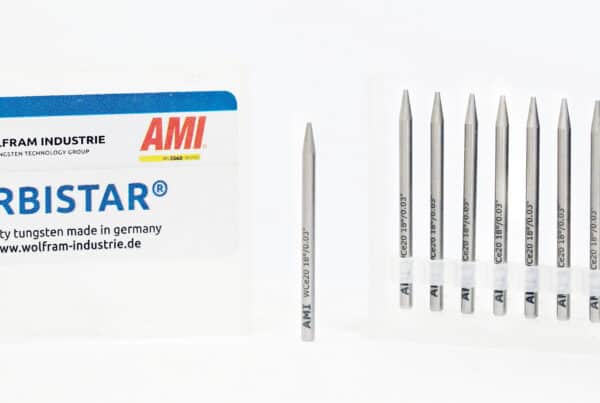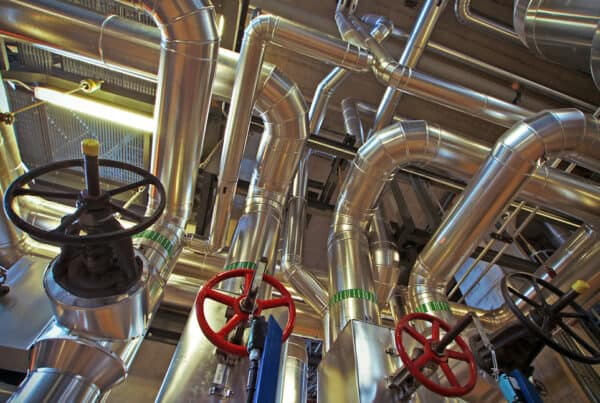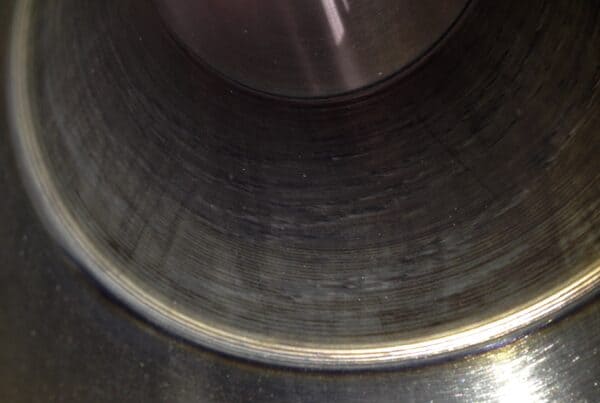
At first glance, Monel® (a trademark name that refers to several different alloys) looks a lot like chrome-molybdenum steel, and there are some overlaps in how these alloys are used, for instance, in highly corrosive environments. However, Monel is a nonferrous alloy of nickel and copper with some unique properties. For instance, Monel has relatively low fluidity when melting and the result is a “sticky” molten puddle and more difficulty maintaining penetration in the joint. Another unique characteristic of Monel is that each of the metals that combine to form this alloy has a slightly different melting and cooling point, which can cause separation when melted. This tendency for the constituent metals of Monel to separate increases the stress on the weld as it cools, meaning that Monel welds tend to be more prone to cracking and lack-of-fusion (LOF). Monel is also very corrosion resistant. This is due to its tenacious oxide coating, and while this is a desirable material trait, the oxide makes the material more challenging to weld.
The best way to weld Monel is widely agreed to be gas tungsten arc welding (GTAW). It provides the ability to keep arc lengths very short, to guide the weld puddle precisely, and to reduce the build-up of heat in the metal. However, even with this precision control, it still takes detailed welding procedure specifications (WPS), a high level of engineering expertise, and a highly skilled welder with experience dealing with this alloy in order to create reliable welds.
Types of Monel Alloys
There are approximately five different alloys that are traded as Monel®, each with different identifying numbers. There is also some variation of the constituent metals within each type of Monel.
A non-exhaustive list of the different types of Monel, their trade names, and their compositions are given in the chart below:
| Trade Name | Monel 400 | Monel 401 | Monel 404 | Monel K-500 | Monel 405 |
| ASTM/AISI* | B 127, B 164 | B 865 | B 164 | ||
| UNS* | N04400 | N04401 | N04404 | N05500 | N04405 |
| Nickel Percentage | 63% min | 63% min | 52-57% | 63% min | 63% min |
| Copper Percentage | 28-34% | 28-34% | REM | 27-33% | 28-34% |
| Iron Percentage | 2.5% max | 2.5% max | 0.5% max | 1.5% max | 2.0% max |
| Magnesium Percentage | 2.0% max | 2.0% max | 0.1% max | 1.5% max | 2.0% max |
| Silicon Percentage | 0.5% max | 0.1% max | 0.5% max | 0.5% max | |
| Aluminum Percentage | 0.05% max | 2.3-3.15% | |||
| Titanium Percentage | 0.35-0.85% |
*ASTM/AISI: American Society for Testing and Materials/American Iron and Steel Institute
*UNS: Unified Numbering System
A common trait of Monel alloys is their resistance to corrosive elements. Monel 400, for instance, is used to manufacture marine parts that must resist corrosion from saltwater as well as chemical processing valves, tanks, pumps, pipes, and—unexpectedly—valves for high-quality musical instruments that need to resist the corrosive action of spit. Another trait common to most Monel alloys is maintaining strength across a wide range of temperatures. Monel 400 has excellent strength at subfreezing temperatures without undergoing a ductile-to-brittle transition. This is in marked contrast to steel and other ferrous alloys whose strength increases as temperatures drop, but which transitions into a brittle state that can be easily broken by an impact.
These properties make Monel alloys incredibly valuable in industrial applications; however, Monel is also very expensive by weight and typically it is only used where no other metal or alloy is suitable. As a result, it’s especially important that the welding of Monel alloys be performed correctly and as near net shape as possible the first time for the sake of the project timetable and budget.
Arc Welding Processes on Monel Alloys
As an alloy made primarily of nonferrous metals, oxyacetylene and other fuel gas welding techniques aren’t applicable to Monel®. The constituent nickel is likely to bond with atmospheric oxygen and hydrogen without the presence of some sort of shield gas or flux, creating porosity and inclusions. Joining Monel is best accomplished through electric arc welding. All types of arc welding provide a way to shield the molten metal and prevent the weld from being contaminated. While all types of arc welding can be used on Monel alloys, some welding processes are known to work better than others.
Welding Monel With SMAW
Shielded Metal Arc Welding (SMAW) or stick welding is by far the most common type of arc welding. Monel can be welded with SMAW using a high-nickel electrode and direct current. However, creating a smooth interior surface for the weld requires the use of a backing plate since SMAW offers no internal shielding of the molten metal. Monel is also especially vulnerable to cracking due to uneven heat, and SMAW welding inputs more heat than gas shielded methods of arc welding. Cracking is especially likely with open-groove welding that requires multiple passes using wide-ranging weave patterns to fill the joint. Monel also becomes contaminated if the molten weld pool is exposed to the atmosphere, and without inert shielding, contamination is harder to avoid. Deposition rates with the SMAW process on Monel are also not ideal.
Welding Monel with Gas Shielded Arc Welding
Gas shielded methods of arc welding have several characteristics that make them preferred for use with Monel. Gas coverage is critical when welding Monel. Similar to the way oxygen exposure can cause severe contamination when welding titanium and aluminum, nitrogen exposure to molten nickel and nickel alloys can cause severe porosity. Inert shielding gas like argon provides a medium that prevents the surrounding atmosphere from contacting the molten Monel. The gas can be pumped into the interior of a pipe or a pressure vessel, and the weld can be shielded from both sides. This ability to shield from both sides ensures a smoother interior weld surface and offers very little chance for nitrogen, oxygen, or carbon to contaminate the weld as long as the joint is prepared properly beforehand. Gas shielded arc welding also allows for more control of the heat input into the metal. The heat of the welding process can be changed by using a mixture of argon and helium, or argon and hydrogen as well. The continuous flow of shielding gas inside and out also improves weld penetration, reducing the potential for crevices and seams in the weld. Of the two types of gas shielded arc welding processes, GTAW is the superior of the two methods for the level of control it offers.
The Best Way to Weld Monel is Automated Orbital Gas Tungsten Arc Welding
GTAW, better known as TIG welding, is widely considered the best way to weld Monel®. Ultimately, welding Monel comes down to the ability of the welder to control a molten puddle that has very little ability to flow without putting excessive heat on a single point. GTAW offers the most control over both heat and the molten puddle. The tungsten electrode at the center of GTAW welding keeps the arc very focused and the heat localized to the weld. Since tungsten electrodes are non-consumable, the welder has a great deal of control over the arc length, arc pressure, and the flow of shielding gas over the weld. A skilled TIG welder can adjust each of these elements as the weld progresses to keep the molten puddle moving, the heat even, and the weld within acceptable parameters.
The issue for many Monel welding projects, however, is that qualified TIG welders who have experience working with Monel are rare. Moreover, the demanding industries that use Monel most often require a level of precision, reliability, and repeatability that is not attainable with manual welding. Automated orbital GTAW welding provides a solution. Comparing orbital welding versus manual welding makes it clear that automated orbital welding offers a more efficient form of GTAW welding as well as the ability to pre-engineer and program parameters such as arc voltage, travel speed, and filler wire feed rate. A project or a manufacturing center can be equipped with more than one orbital weld head, enabling it to weld multiple Monel joints simultaneously. The welding data and weld production schedules generated at one location can be used to program automated weld heads at many other locations in order to produce the same consistent high-quality welds over and over while reducing labor costs. Deposition control with the automated process aids in distortion control and a nearer to net shape product, helping to reduce excess material waste. All of these benefits make automated orbital GTAW welding the best way to weld Monel and other exotic alloys.
Arc Machines, Inc. is a recognized leader in automated GTAW welding, which offers a reliable, precise way to weld Monel, Inconel®, and a wide variety of other metals and alloys. For inquiries regarding products, contact sales@arcmachines.com. For service inquiries, contact service@arcmachines.com. Arc Machines welcomes the opportunity to discuss your specific needs. Contact us to arrange a meeting.





